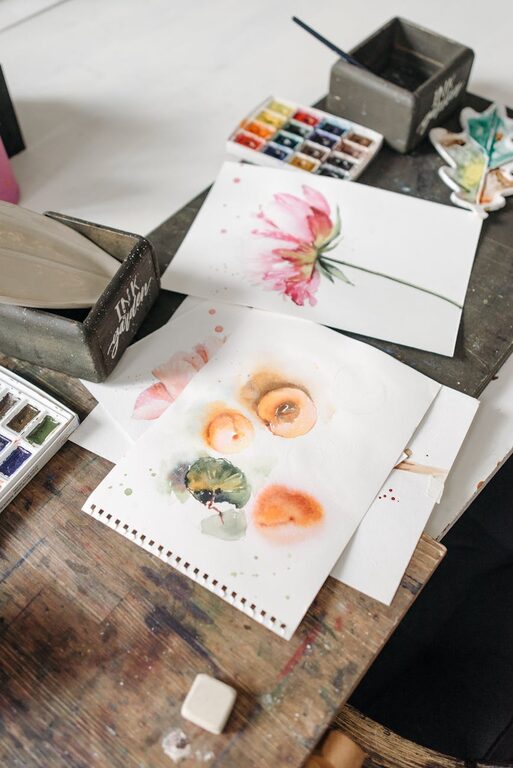Creativity is often seen as a special talent reserved for artists or writers, but the truth is, everyone can nurture and practice creativity every day. It’s less about producing masterpieces and more about building habits that encourage fresh thinking and problem-solving. Whether you want to spark new ideas for work or add more joy to your daily life, simple creative practices can make a big difference.
In this post, we’ll explore easy ways to practice creativity each day that don’t require special skills or a lot of time. These small habits can help you unlock your imaginative potential and inspire new ways of seeing the world.
Why Practice Creativity Daily?
Many people think creativity only happens in moments of inspiration, but practicing creativity daily has lasting benefits:
– Improves problem-solving skills: Creativity helps you find different approaches to challenges.
– Boosts mental flexibility: Regular creative exercises train you to think in new ways.
– Enhances mood and reduces stress: Creative activities can be meditative and uplifting.
– Fuels innovation: Daily creativity makes it easier to generate fresh ideas for work or personal projects.
You don’t need to overhaul your routine; even small daily steps can lead to noticeable changes over time.
Simple Ways to Practice Creativity Every Day
1. Keep a Daily Journal
Journaling is a powerful way to unlock creative thoughts. Set aside 5 to 10 minutes to jot down your ideas, observations, or even random thoughts. Don’t worry about grammar or making sense — just write freely.
You can try prompts such as:
– Describe something interesting you noticed today.
– Write a short, fictional story about your day.
– List things that inspire you right now.
The goal is to make writing a habit. Over time, you’ll see new patterns and ideas emerge from your entries.
2. Change Your Environment
Sometimes creativity flourishes with a change of scenery. If possible, switch up your workspace or take a walk in nature during breaks. New sights and sounds stimulate your brain and encourage fresh thinking.
Try:
– Working from a coffee shop occasionally.
– Rearranging your room or desk.
– Exploring a new park or neighborhood.
Even small differences can break mental routines and open up creative pathways.
3. Try a Creative Challenge
Challenges spark motivation and push you to experiment. Pick a simple daily creative challenge to add structure to your practice. Examples include:
– Drawing one small sketch a day.
– Writing a six-word story.
– Taking a photo of something blue or unusual.
Find challenges that excite you and keep them manageable so they feel fun, not overwhelming.
4. Practice Mindfulness and Observation
Creativity often begins with paying attention. Spend time each day observing details around you — colors, textures, sounds, or people’s behavior. Mindfulness helps your brain notice things it might otherwise skip over.
Try these tips:
– Close your eyes and focus on sounds for one minute.
– Draw or describe an object closely.
– Describe the emotions of people in a scene you witness.
The more detailed your observations, the more material you have to inspire ideas.
5. Collaborate or Share Ideas
Creativity can multiply when you interact with others. Sharing your ideas or working alongside friends or colleagues can introduce new perspectives and feedback that fuel your imagination.
Consider:
– Joining a creative group or club.
– Participating in brainstorming sessions.
– Discussing creative topics online or in person.
Different viewpoints expand how you think about problems and ideas.
6. Learn Something New Regularly
Trying new skills or knowledge broadens your mental “toolkit.” The more experiences you gather, the more connections your brain can make between unrelated concepts, a key ingredient to creativity.
You might:
– Listen to a podcast outside your main interests.
– Watch a tutorial on a craft or hobby.
– Read articles about new fields or cultures.
Diverse inputs stimulate creative thinking and help you generate innovative ideas.
7. Limit Distractions and Allow Daydreaming
Creativity needs space. Overloading your schedule or being constantly plugged in can block the flow of ideas. Give yourself permission to unplug and daydream sometimes without a set agenda.
Try:
– Turning off notifications during specific times.
– Sitting quietly without devices for a few minutes.
– Letting your mind wander freely.
These breaks help your subconscious work behind the scenes and often lead to surprising insights.
Making Creativity a Habit
Consistency is key to developing creativity as part of your life. Here’s how to support ongoing practice:
– Set aside time daily: Even 10 minutes matter.
– Celebrate small wins: Notice what you create or new ideas you have.
– Be patient and kind: Creativity ebbs and flows; that’s normal.
– Keep trying different methods: Mix activities to find what sparks you most.
Remember, creativity is less about perfection and more about expression and exploration.
Conclusion
Incorporating creativity into your daily routine doesn’t require special talents or large time commitments. By making simple changes—like journaling, changing your environment, trying challenges, and observing mindfully—you can train your brain to think in richer, more creative ways. Over time, these small habits build a creative mindset that benefits your work, personal projects, and overall well-being.
Start small today and enjoy the journey of discovering your creative potential!

